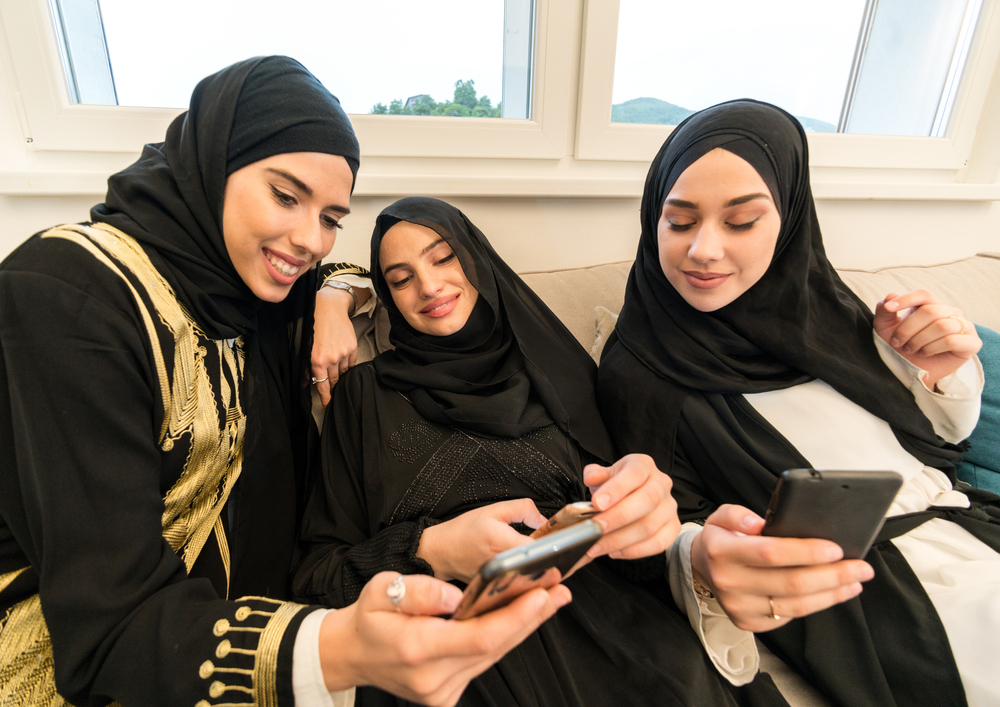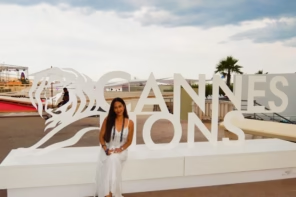
Monday December 2, 2024
The Digital Revolution: How Social Media is Shaping Information Consumption in the GCC
But what does this mean for the way people in the GCC—especially its younger generations—engage with information? We spoke to a young millennial living in the GCC who shared their views and personal experiences of using social media. To respect their privacy, they’ll be known as “M” in this article.
The Rise of Social Media: First Touch Point
In the digitally driven GCC, the way people consume information has been completely redefined. With some of the highest internet penetration rates in the world, the region is seeing a dynamic shift towards social media as the go-to source for everything—from news and entertainment to lifestyle updates. In fact, GCC residents, on average, spend over 3.5 hours a day on social media platforms, far surpassing global averages.
The likes of Instagram, TikTok, Snapchat, and Twitter/X have evolved beyond mere entertainment—these platforms are shaping how people across the region engage with information. Take Saudi Arabia, where over 80% of the population actively uses social media daily. Similarly, the UAE enjoys almost universal internet usage, with an astounding 99% penetration rate. (Source: Go-Globe)
Platforms like Instagram have become central to how younger audiences curate their news feeds, with 40% of users reporting it as their go-to platform for local news. Meanwhile, TikTok and Snapchat are growing exponentially in popularity for real-time, short-form content that perfectly caters to the region’s youth, who are increasingly looking for quick, digestible content at their fingertips.
Beyond the visual platforms, WhatsApp reigns supreme for community-driven conversations. Whether it’s discussing local events, sharing the latest news, or even keeping tabs on daily trends, WhatsApp has become a hub for staying informed and connected, especially in the UAE and Qatar.
And let’s not forget YouTube, still a powerhouse for video content, boasting one of the highest engagement levels across the GCC.
In this constantly evolving media landscape, social media isn’t just competing with traditional outlets—it’s rapidly taking over, reshaping how people across the region stay informed, connected, and engaged with the world around them.
Speaking with M, the last ten years have seen a real shift from turning away from legacy media to social platforms as a first touch point. They explain, “For my generation and younger, traditional TV and print newspapers are consumed more by our grandparents. Social media gives us everything at our fingertips 24-7, and it’s live, immediate, and interactive. We are not just receiving information anymore; we’re an active part of the ecosystem.”
This sentiment aligns with the findings of theReuters Digital News Report, which shows that younger audiences in the GCC increasingly rely on social media platforms for their daily news and general information. The transition is not just about convenience but also about the type of content these platforms offer—short, engaging, and visual.
Snapchat and its Cultural Fit in the GCC
The shift from traditional media to social platforms is most evident in how GCC millennials and Gen Z now access information.
According to a study byThe National, Snapchat has emerged as one of the most popular apps in the region, especially among young users. In Saudi Arabia, 90% of people aged 13-34 use Snapchat, and the platform enjoys similar popularity across other GCC countries.
Snapchat is a natural fit for GCC culture, mimicking real-life interactions and allowing users to share meaningful moments, from daily events to celebrations.
It has become a dominant force, with users in the GCC opening the app more than 45 times per day on average, according toGo-Globe. The platform’s popularity stems from its ability to facilitate real-time interactions, much like face-to-face conversations, making it deeply relevant to the region’s culture. As M noted, “Snapchat has changed the dynamics further. People are ‘on’ the whole day, being connected to what’s happening on the ground and being part of the conversations, such as galvanising support for important causes like disaster relief and raising awareness about what’s happening in neighbouring conflict areas and beyond. ”
Snapchat’s rise in the region is not limited to casual interactions. It has also become a space where brands and influencers collaborate to create content that resonates with audiences. In Saudi Arabia, 71% of parents are also active on Snapchat, indicating its broad demographic reach.
Instagram and the Lifestyle Vibe
While Snapchat dominates real-time interactions, Instagram has carved a niche in lifestyle and creativity. The platform is widely used for sharing artistic and lifestyle content, particularly in GCC countries where aesthetic appeal holds significant value.
M shared, “Instagram has a whole lifestyle and artistic vibe that has taken off in GCC countries. As a region, we are curious and have a great love and appreciation for literature, art, and creativity. It’s a safe space where you can also have private accounts to share your life with family and friends, be inspired, learn, and share your talents and interests. It is my visual window to lives, philosophies and the world.”
Podcasts: Rising Medium for Knowledge
In the ever-evolving digital landscape, podcasts have emerged as a powerhouse for deeper, more meaningful content consumption. No longer just a niche medium, podcasts are seeing a major surge, with global listenership projected to hit nearly 505 million by 2024. (Source: Priori Data)
In the GCC, podcasts have become the go-to for those looking to enrich their knowledge, offering a blend of local and global content that resonates with a diverse, intellectually curious audience. Whether you are tuning in for news, business insights, or culture, podcasts offer a direct line to the thought leaders shaping today’s conversations.
M summed it up, “Podcasts allow me to dive deeper into topics that matter—whether it’s finance, lifestyle, or something more personal which scrolling through social media just can’t match. It has become part of my daily routine. You can listen and learn anywhere, literally, while doing anything you wish.”
It is this depth and flexibility that is driving the rise of podcasting, especially on platforms like Spotify and Apple Podcasts, which dominate the market with 34% and 27% of the audience share, respectively, according toPriori Data.
YouTube: A Constant in the GCC’s Digital Diet
While platforms like TikTok and Snapchat are riding high in the hearts of younger users, YouTube quietly maintains its dominance. With over 2.5 billion active users globally, it’s one of the most widely used platforms in the world, and its reach in the GCC is no different. Whether it is deep dives into long-form content, tutorials, or just music videos on repeat, YouTube offers an unmatched range of content that appeals to all demographics.
For GCC millennials and Gen Z, YouTube remains a go-to for more substantial, engaging videos—whether they’re exploring new trends or tuning in for educational content. Its mobile-friendly design fits perfectly into the region’s increasingly mobile-first world, keeping YouTube relevant even as newer platforms steal the limelight.
In a media landscape dominated by speed and short bursts of content, YouTube’s ability to offer depth ensures it remains a key player in how people consume information and entertainment across the GCC.
Facebook: Waning Influence Among the Youth?
Once a social media giant among all demographics, Facebook’s grip on younger users in the GCC has notably loosened. While it still commands an impressive user base—88.9% reach in the UAE and 83.6% in Qatar —the platform is struggling to maintain its relevance with millennials and Gen Z, who are increasingly gravitating towards faster, more visually engaging alternatives like Instagram, TikTok, and Snapchat. (Source: GO-Globe)
M reflected on this shift: “. The platform’s algorithm changes made the content too generic, and it’s not as quick or relevant as others like Instagram or Snapchat.”
Facebook, meanwhile, is still a key player but faces increasing competition for attention as its engagement rates falter. With half of the time spent on the platform now dedicated to video consumption, even those who remain are drawn to more dynamic forms of content, according to Sprout Social.
For many millennials in the GCC, platforms like Instagram and Snapchat simply offer more personalised, immediate experiences, making Facebook feel like a relic of a different digital era.
Trust and Credibility in Social Media
One of the greatest challenges with the shift to digital platforms is trust. While social media offers immediacy and engagement, it also opens the floodgates to misinformation.
Reflecting on her own experience, M explained: “From the time I joined Twitter/X, it was my go-to for being plugged into the world. It felt like a small community where I could access global perspectives, art, literature, geopolitics and economics. However, as the platform grew, it became less personal, and anonymous posts made it harder to verify what was real. Today, I still use Twitter/X, but more cautiously, mostly to verify news by checking official accounts from legacy media and international media for work”.
This sentiment echoes the broader trends seen in the Reuters Digital News Report 2023, which highlights that while younger audiences are more reliant on social media, trust remains a sticking point. Despite its challenges, X remains an essential tool for GCC millennials to stay informed—especially when combined with the credibility of verified sources. While platforms like TikTok and Instagram are rising in popularity for entertainment and light news, they are viewed with more scepticism when it comes to hard news.
Navigating a Shifting Digital Terrain
The digital shift has fundamentally changed how information is consumed in the GCC. Platforms like Snapchat, Instagram, TikTok, and Twitter/X dominate daily life, offering real-time access to global and local conversations. Podcasts and YouTube add depth to the mix, providing deeper content and a reflective alternative to fast-paced social content.
As M’s story highlights, it is not a simple takeover—legacy media still holds weight when accessible on social platforms, offering trust where immediacy is not enough. In the landscape of constant change, one thing remains clear: meaningful, authentic, culturally relevant content will always lead.
Curzon PR is a London-based PR firm working with clients globally. If you have any questions, please feel free to contact our Business Development Team bd@curzonpr.com







Follow us